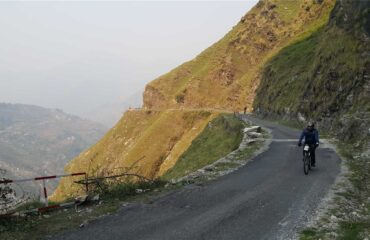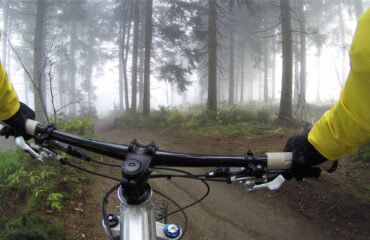
Head on to the blog if you’re planning a cycling trip and need serious help.
Traveling will never be identical for each individual. We do it because it makes sense on a certain level when it comes to living life to the fullest. We can observe various approaches to traveling amongst a variety of people. With the increasing prevalence of traveling culture worldwide, cycling has become one of the most popular modes of transport. The duration of a cycling trip can vary from a single day to months and for some, even years if doing a nomadic cycling (or ‘bikepacking’) trip.
In this blog, we will be providing general information and tips on the things to carry while on a long bike trip.
- First-aid
Safety comes first. Make sure to carry original medicines with definite dose levels.
Here are some recommended medicines and first-aid items:
- Acetaminophen (paracetamol), ibuprofen, or aspirin to relieve headaches, pain, fever, and simple sprains or strains
- Antihistamines to relieve allergies
- Antinausea or motion sickness medicine (you may also want to include medicine for altitude sickness if traveling to high altitudes.)
- Antibacterial hand wipes or an alcohol-based hand cleaner (should contain 60% alcohol or more)
- Bandages of assorted sizes for minor cuts and scrapes
- Wound closures, such as butterfly bandages, to tape edges of minor cuts together
- Gauze in rolls, as well as 2-inch and 4-inch pads to dress larger cuts and scrapes
- Adhesive tape to keep gauze in place
- Scissors with rounded tips to cut tape, gauze, or clothes, if necessary (note that this may not be allowed in your carry-on bag if traveling by air)
- Safety pins to fasten splints and bandages
- Antiseptic wipes to disinfect wounds or clean hands, tweezers, scissors, or other items
- Antiseptic ointment or spray to prevent infection in cuts, scrapes, and burns
- Hydrogen peroxide to clean and disinfect wounds
- Disposable, instant-activating cold packs to cool injuries and burns, as well as for use in strains and sprains
- Disposable rubber gloves to protect hands and reduce the risk of infection when treating wounds
- Thermometer to take temperatures in case of illness
- Hydrocortisone cream to relieve irritation from rashes
- Cough and cold medicines
- Water-soluble rehydration salts
- Anti-diarrheal tablets/capsules
- Epinephrine auto-injector for individuals with severe allergies
- List of prescription medicines and generic names
- Water purification tablets
- Sunscreen with SPF 15 or higher
Backpack
The right backpack is necessary to withstand the prevailing weather conditions and be sufficiently durable while traveling. This is also very important for helping to avoid back pain when doing a multi-day trip. It is a one-time investment and recommended that you aim for the best quality you can afford when purchasing a travel bag for yourself. Try to estimate the number of things you will be carrying before buying one and get the right sized bag. A 15 liters to 40 liters backpack is generally good for longer cycling trips.
Pannier bags
Always go for a good quality, waterproof, frame-mounted bag, handlebar bag, or trunk bag. The sizes of the pannier bags need to fit precisely on your bike. A good tip with a pannier bag is to have some experience in using it before trusting it for longer biking trips.
Cycling clothes
Your body needs appropriately fitting clothes for cycling trips since you are constantly moving and most likely, sweating. Take care when selecting materials and fabrics to ensure the clothes have good ‘wicking’ qualities to assist with the removal and escape of sweat from the body Synthetic materials such as polyester are effective and economical, while natural fabrics such as merino wool are also very effective and have odour-controlling properties. Ensure the fabric is soft and the fit well-selected to your body type to prevent chafing. Clothes that dry quickly after a long-day of riding are also essential.
Cycling shoes
Make sure the shoes you are wearing have a proper grip with your pedal. Pedal options include clip-ins or studded flats and the shoe you use should be matched accordingly. Cycling shoes should be lightweight and a good fit. Soles should be sufficiently stiff and the upper should be adjustable and breathable.
Hydration
Travelers should pay good attention to hydration, which is very important to save you from dehydration and muscle cramps. Frame-mounted bottles can be obtained in any bicycle shop, otherwise an alternative is to use a hydration backpack. In warm conditions, it is recommended to add electrolytes to the water to ensure you maintain appropriate salt levels and better support successful hydration. Magnesium is also good for preventing muscle cramps and assists recovery after longer rides.
Energy pack
It is always a good idea to carry some energy-giving food with you. This can be a mixture of homemade granola bars, fruits such as bananas and apples or just dried fruits while traveling. The intake of energy bars is nice to get you back up and riding in no time. Try to aim for natural sugars as opposed to processed ones, to avoid the rapid ‘sugar-rush’ which does not sustain you for very long. It is always a good idea to avoid a heavy intake of food in the middle of long-distance rides and instead, eat more frequently and in smaller quantities.
Tyre repair kit
Something you must never fail to carry for any ride (particularly long-distance) is a tyre puncture repair kit, a spare inner tube, though ideally both. This should include robust tyre levers, vulcanising fluid and patches. Note that self-adhesive patches are convenient but tend to be less effective. Before setting off, make sure you know how to use the kit and ideally, practice once or twice. Obviously when carrying such equipment, having a tyre pump is also essential too, as well as to help maintain the correct pressure.
Thermal set
A set of thermal base layers are very handy when traveling in high-altitude regions or during the winter season. They tend to be lightweight and help keep you warm after you’ve completed your day of cycling.
Lights
Sometimes the estimated timeline for your cycling journey can be exceeded due to unforeseen circumstances. Carrying lights is necessary to ensure you’re visible in dark conditions, particularly when traveling on the highway or over rough terrain. Always purchase good quality lights that have several light modes and are waterproof. It is important to have both front and rear lights to ensure visibility from both sides. USB-chargeable lights are definitely recommended.
Essentials
- Hydration Pack
- Smartphone, GPS, or route map
- Sunglasses
- Sunscreen
- Emergency contact info
Nutrition
- Electrolyte powder
- Energy bars
- Nuts
- Fresh fruit
Bike Accessories for Long-Distance Touring
- Panniers (20 or 40-liter)
- Frame bag
- Handlebar bag
- Trunk bag
Daypack
- Headlight
- Flashing tail light
- Reflectors
- Bike lock
Repair Items
- Spare tube
- Spare brake pads
- Patch kit
- Pump
- Tyre levers
- Allen-keys (or multi-tool)
- Chain tool
- Chain lube
- Rag for hand-cleaning after maintenance
Clothing
- Bike helmet
- Cycling jersey
- Cycling layers – windbreaker, rain jacket, sleeves, leggings, etc. (weather dependent)
- Bike shorts
- Bike shoes
- Socks (wool or synthetic)
- Bike gloves
- Sweatbands/caps/bandana
- Autumn/winter gloves (weather dependent)
- Fleece/wool hat (weather dependent)
- Waterproof rain booties/gaiters
- Post-ride shoes or sandals
- Post-ride set of clothes – shirt, shorts/pants, underwear, socks, etc.
Documents
- Credit/Debit Card
- Cash
- Driver’s license/Passport/Citizenship (Necessary when you’re traveling between countries or protected areas)
- Travel Insurance card
More
- Toilet paper/tissue
- Basic first aid kit
- Camera + accessories
You can always increase the cycling trip checklists according to your specific preferences or aims. Starting with the basic essential gear is always the best and try to pack as light as you can. We hope the blog has helped you plan your cycling trip better. Have a blast!
We conduct various cycling tours.




